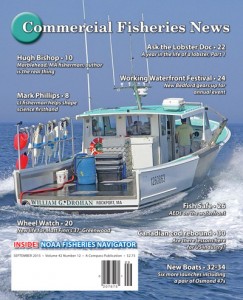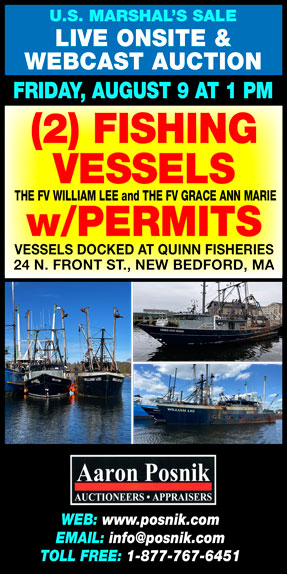The Northeast groundfish industry – what is left of it – and NOAA’s National Marine Fisheries Service (NMFS) are at an impasse over future funding of the at-sea monitoring program (ASM).
NMFS is saying it is time to shift the cost burden to fishing vessel owners. Fishermen, and many friends and supporters of the industry, are saying this will bankrupt a large number of already marginal groundfish boats and fleets.
In mid-August, Massachusetts Gov. Charlie Baker, Sen. Elizabeth Warren (D-MA) and Sen. Ed Markey (D-MA), and all members of Congress from Massachusetts called upon the Obama Administration to reverse its policy decision and continue the funding of at-sea monitoring for Northeastern fishermen.
Citing a NOAA analysis of the transfer, their letter makes the point that monitors (observers) will cost the fishery $2.64 million in the first year alone, and would lead to an estimated 60% of the vessels in the fishery operating at a loss.
This amounts to an “unfunded mandate that could lead to the end of the Northeast groundfishery as we know it,” the letter further states.
This comes on the heels of a request in June by the New England Fishery Management Council asking NMFS to take administrative actions to improve the efficiency – and reduce the costs – of the program without compromising compliance with current laws.
NMFS rejected that request.
So now what?
One might think that common sense would prevail and a solution emerge. One that would end this impasse in a way that both meets NMFS’s oversight obligations and addresses industry’s concerns about cost and effectiveness.
But in some ways, this is more about current politics and government’s ongoing difficulty in funding its own mandates and missions, and less about policy and priorities to protect fish stocks and preserve fishing businesses.
Someone needs to blink.
Maybe both sides.
Rightly, we believe, industry and its advocates are challenging NMFS to:
• Prove the actual effectiveness of the at-sea monitoring program, which many believe has fundamental flaws;
• Explain why ASM is so expensive and address ways to improve efficiency and reduce costs of the program regardless of who is paying for it;
• Investigate alternatives to ASM, such as electronic monitoring; and
• In the meantime, continue funding ASM without dipping into federal fisheries disaster relief aid to cover those costs.
We support this approach.
At the same time, we encourage industry to be flexible and realistic in its expectations going forward.
Monitoring, in some form, is going to be a cost of gaining access to stocks for our industry probably forevermore. Done deal.
And, while it pains us to say this, industry is likely going to have to assume some cost share of monitoring – with what kind of monitoring, and at what cost, to be determined.
The region’s groundfish industry has proven its resilience to endure and survive, albeit on a much-reduced scale, and this is a fixable problem.
Let’s get it done. /cfn/

To read the rest of the September issue of Commercial Fisheries News – please choose from the following options:
Buy a Single PRINT edition of CFN that is delivered by MAIL. PRINT EDITION
Quickly enjoy ONLINE access with our flip-book. ONLINE EDITION
(Read online flip-book immediately with access key and download a copy for yourself. Not sure? SAMPLE HERE)
SAVE BIG when you SUBSCRIBE!








 Updating...
Updating...